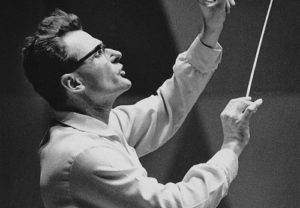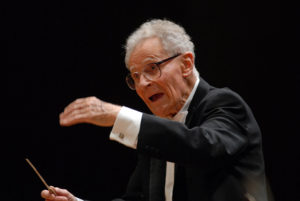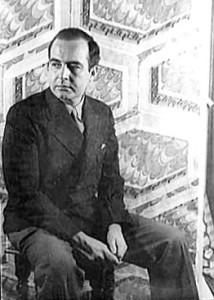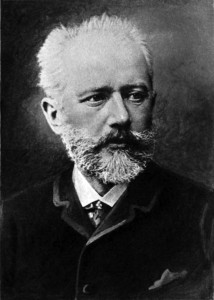 The Hedgehog notes with great sadness that Stanislaw Skrowaczewsi passed away, February 21, 2017. The Minnesota Orchestra performed a special concert as his memorial. Skrowaczewski has a special place in The Hedgehog’s heart as we had great pleasure interviewing him for the Fall, 2006, issue of The Hedgehog (Vol. 4, No. 1) Born in Lwow, Poland (it is now Lviv, Ukraine), 1923, his gifts were apparent from an early age. He began to study violin and piano at age four, to compose at age seven, made his first public recital at eleven, and conducted Beethoven’s Third Piano Concerto at thirteen. In his mid-twenties he became, successively, Music Director of the Wroclaw, Katowice, and Krakow Philharmonic Orchestras, and then of the Warsaw National Orchestra.
The Hedgehog notes with great sadness that Stanislaw Skrowaczewsi passed away, February 21, 2017. The Minnesota Orchestra performed a special concert as his memorial. Skrowaczewski has a special place in The Hedgehog’s heart as we had great pleasure interviewing him for the Fall, 2006, issue of The Hedgehog (Vol. 4, No. 1) Born in Lwow, Poland (it is now Lviv, Ukraine), 1923, his gifts were apparent from an early age. He began to study violin and piano at age four, to compose at age seven, made his first public recital at eleven, and conducted Beethoven’s Third Piano Concerto at thirteen. In his mid-twenties he became, successively, Music Director of the Wroclaw, Katowice, and Krakow Philharmonic Orchestras, and then of the Warsaw National Orchestra.
After World War II, he studied in Paris with Nadia Boulanger, co-founded an avant-garde music group, Zodiaque, and won prizes for his compositions. His symphonic works, from the late 1940s-early 1950s such as Symphony for Strings and Music at Night, are still in the repertory of European and American orchestras. In fact, it was the San Francisco Symphony’s premiere performance of Music at Night which was the occasion of our meeting with him. He composed more than 36 orchestral and chamber works. After Skrowacewski won first prize in Rome’s Santa Cecilia International Competition for Conductors, 1956, George Szell invited him to make his American conducting debut with the Cleveland Orchestra. This acclaimed performance led to his appointment with the Minnesota Orchestra (then named the Minneapolis Symphony Orchestra). He and his wife had to defect from Communist Poland to take this position. He said that he and others were not allowed to conduct whole areas of music, “including Stravinsky.” He was Minnesota’s Music Director, 1960-1979, and then became their active conductor laureate. He was principal conductor of the Halle Orchestra in Manchester, England, 1984-1991, and returned to Poland annually to conduct in Warsaw and Katowice. Poland gave him its highest honor, naming him Commander with White Star. Minnesota also honored him with the McKnight Distinguished Artist Award for contributions to Minnesota’s Arts and Culture, 2004.
(For a copy of The Hedgehog with the Skrowaczewski interview and photo portrait by Jonathan Clark, please contact livelyfoundation@sbcglobal.net A limited number of these back issues is available. These quotations from Stanislaw Skrowaczewski are published with permission of The Hedgehog, a publication of The Lively Foundation. The copyright belongs to The Lively Foundation. PLEASE DO NOT QUOTE OR REPRODUCE WITHOUT PERMISSION.)
THE FOLLOWING IS QUOTED from Skrowczewski’s Hedgehog interview: “after I won the first prize in conducting in Rome, the career went so fast that I stopped composing.” “…a concerto and a symphony that I composed over four or five years; that was a lot of work, and went very slowly. I write slowly, and I wrote very few things, and many I destroyed later. Music At Night is one of five or six works written between 1949 and now that I have kept. now I have many commissions. The first is a piano concerto for left hand for Gary Graffman, sponsored by the Curtis Institute where he is president.” On the current state of music composition, “There is no better word than the French, de grande volard, “it means the arts go down.” On musicians, “Oh, the state of orchestras is technically very, very good, and we have great conductors, I think…The education musically in America is terrific…there are so many that for one opening in a major orchestra you have a hundred very good musicians.”
For a copy of The Hedgehog with the Skrowaczewski interview and photo portrait by Jonathan Clark, please contact livelyfoundation@sbcglobal.net A limited number of these back issues is available. These quotations from Stanislaw Skrowaczewski are published with permission of The Hedgehog, a publication of The Lively Foundation. The copyright belongs to The Lively Foundation. DO NOT QUOTE OR REPRODUCE WITHOUT PERMISSION.






